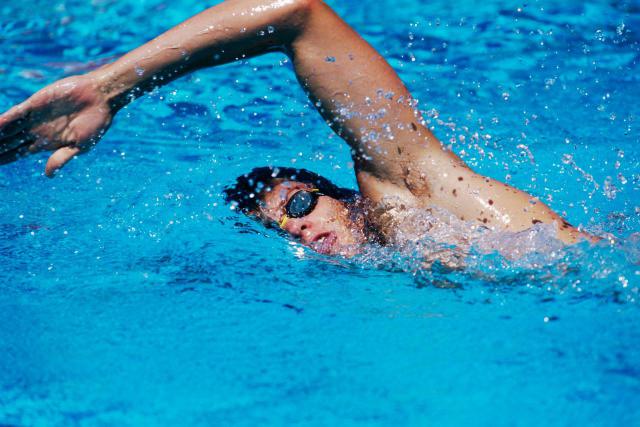Swimming is an amazing exercise and it is one of those rare workouts that never bore us. This is primarily because swimming involves a variety of styles and techniques and learning and practicing each one is fun and relaxing with a lot of positive benefits for the mind and the body. Now, out of the four main styles of swimming namely, breaststroke, backstroke, front crawl and butterfly, backstroke is the only one that is swum on the back. It is a comparatively slower style of swimming than front crawl and butterfly but faster than breaststroke swimming.
Now, if you are learning swimming at a reputed Katy swim club and have reached a stage where you are required to learn backstroke swimming, worry not for the process is going to be fun. You just need to keep certain tips and strategies in mind, especially with respect to the art of moving your body, your arms and most essentially, kicking inside the water. Here, take a look at a detailed discussion on how backstroke swimmers can learn this technique fast and swim better with time.
A Quick Overview of the Swimming Style
Before moving on to specific tips, let us first understand how backstroke swimming is performed. While swimming on your back, your arm typically moves in alternating positions. So, while you sweep one arm underwater from an overhead position and then back to the hips, you typically recover the other arm from the hips to the overhead position. The legs, on the other hand, are required to do a flutter kick and move upwards and downwards alternatively. The feet remain pointed with the hips being flexed. The head is held in a neutral position with the face above the water surface, allowing you to look straight up.
Head and Body Position
In backstroke swimming, your body remains horizontal with a minimum tilt towards the feet. This tilt makes way for the flutter kicks without the legs breaking the water surface. Maintaining this horizontal position is often a challenge for the beginners. However, one of the best things you can do to adapt to this position is leaning back enough on the water. When you do so, you press the most buoyant part of your body, i.e., the lungs, thereby, making it easier for your hips and legs to rise. Your body acts as a lever, helping you stick to the very necessary horizontal position.
The Backstroke Kick
Kicks or more popularly, the flutter kicks play an important role in backstroke swimming. As a pro swimmer, you need to master the six-beat kicking pattern, in which your each foot kicks three times per backstroke cycle for six kicks in total. This technique helps in producing the best-possible propulsion. However, while swimming on your back for a longer distance, a four-beat kick can be practiced to save energy. Work on your balance as the more the expertise with which you balance on your back, the more powerful will your kicks be.
Breathing
Breathing in backstroke swimming becomes easy once you have learnt to use the flutter kicks and have mastered the art of balancing your horizontally on your back. Everything is intertwined, as a result of which, the better you perform a particular technique, the more precise the other one gets. That being said, there are a few things that come as obstacles in your way of breathing like the water splashing on your face during the arm recovery. The tip to dealing with this requires you to exhale just at the moment before the water is projected in your face. Make it a point to inhale rapidly through the mouth and nose and then exhale gradually through the nose only with the mouth kept shut. This will also avoid water getting into the nose as long as you are exhaling as your mouth is, anyways, shut.
While following these tips and mastering the techniques mentioned above might seem difficult at first, it is only consistent practice that eventually helps you get on the track. Above all, abide by the guidance offered by the expert trainers who are the best people to prepare you for even backstroke swimming competitions.
